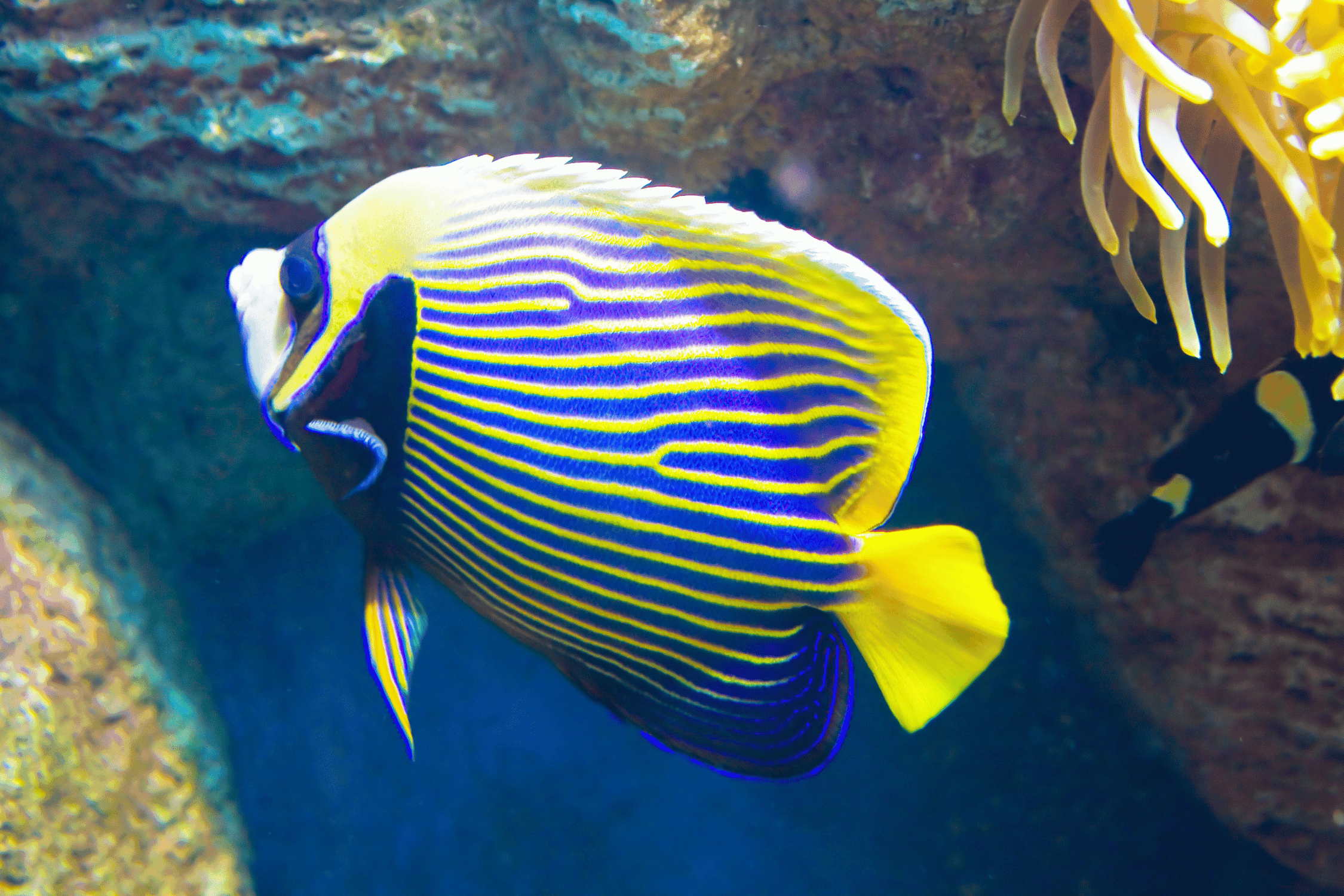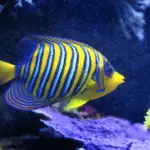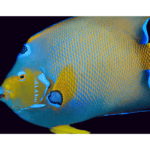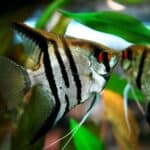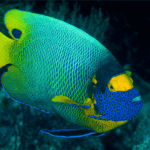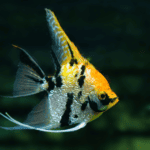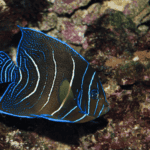Emperor angelfish, scientifically known as Pomacanthus imperator, is a vibrant and popular species of marine fish that captures the attention of aquarists and marine enthusiasts alike. Known for their striking appearance and unique personalities, these fish make a wonderful addition to many home aquariums, as well as being a fixture in the colorful underwater world. In this article, we will delve into the world of emperor angelfish to explore their physical appearance, behavior, and habitat.
Native to the Indo-Pacific region, emperor angelfish thrive in shallow coral reefs and lagoons, exhibiting a fascinating combination of adaptability and beauty. Their remarkable colors and patterns not only make them a favorite among fish enthusiasts but also play a crucial role in their ability to communicate with other fish and protect themselves from predators. Along with their vivid looks and interesting behavior, emperor angelfish have a range of distinctive dietary and habitat needs that require specific understanding and care for success in keeping them in captivity.
Key Takeaways
- Emperor angelfish are known for their striking appearance and unique personalities, making them popular among aquarists.
- These fish are native to the Indo-Pacific region, thriving in shallow coral reefs and lagoons, with specific dietary and habitat needs.
- Captive care can be challenging but rewarding, provided proper knowledge and understanding of their behavior and requirements are followed.
Physical Appearance
Coloration
We can observe that the Emperor Angelfish exhibits vibrant and remarkable colors in both its juvenile and adult stages. Juveniles possess a mix of dark blue, light blue, and white hues, while adults display a combination of blue, yellow, and black colors. The bright coloration plays a significant role in their adaptation to the coral reefs and various depths they inhabit.
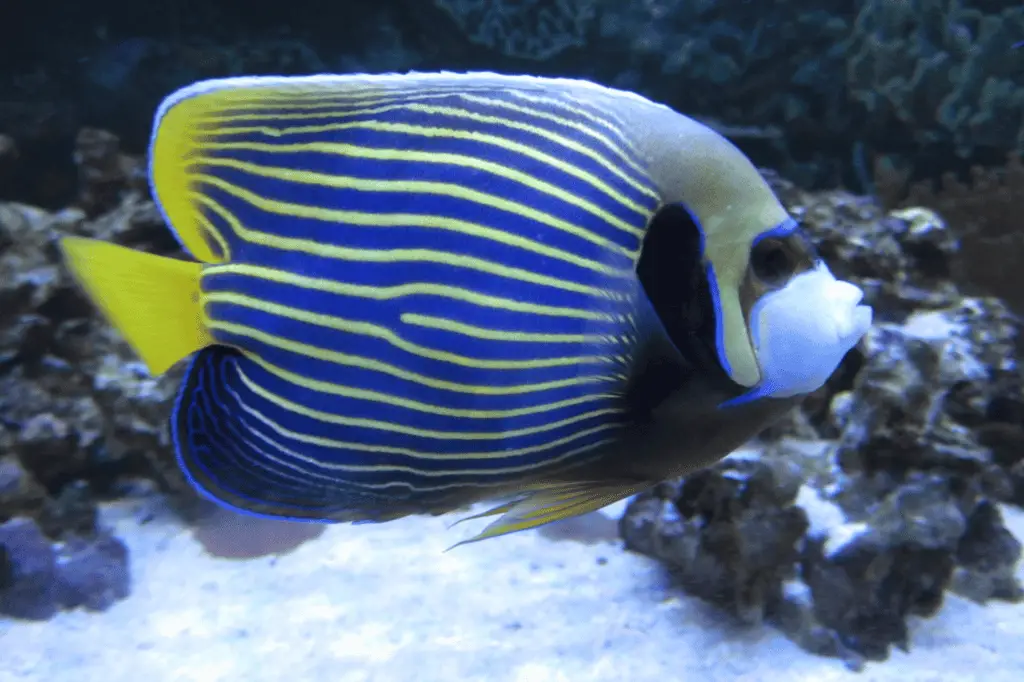
Pattern
Focusing on the patterns of the Emperor Angelfish, we can notice that juveniles are decorated with concentric rings, which consist of dark blue and light blue stripes with a white central region. Conversely, adults are adorned with horizontal stripes that run across their body. Additionally, they have a distinct “mask” around their eyes – a black region that covers their face to help ward off predators.
Size and Growth
As for size, we can report that Emperor Angelfish typically range from 5 to 15 inches in length in their natural habitat. While juveniles start at a smaller size of around 2-3 inches, they can grow to reach their adult size within a few years. Their growth is predominantly dependent on factors such as diet, water conditions, and habitat quality.
| Life Stage | Length |
|---|---|
| Juvenile | 2-3 inches |
| Adult | 5-15 inches |
Distinguishing Features
In terms of distinguishing features, the Emperor Angelfish exhibits unique traits that set them apart from other species. Their dorsal and anal fins are elongated and feature dramatic coloring that complements their horizontal stripes. The caudal fin, or tail, showcases a crescent-shaped design with a blend of blue and yellow shades. Furthermore, each life stage has a distinct appearance:
- Juveniles: concentric rings, dark blue/light blue/white
- Adults: horizontal stripes, blue/yellow/black, facial mask
By thoroughly understanding their physical attributes, we can confidently identify and appreciate the Emperor Angelfish in their natural habitat.
Behaviour and Habitat
Social Behaviour
We observe that Emperor Angelfish display an interesting social behaviour. They are known to be territorial, often defending their territories against intruders. During such events, the dominant fish may engage in aggressive behaviours like chasing and displaying their fins to assert dominance. It is also fascinating to witness how they form pairs or small groups as they navigate their territories in search of food, shelter, and potential mates.
Habitat
Emperor Angelfish thrive in the lush, vibrant environment of coral reefs, which provide them with ample space to swim and hide. They favor areas with rich coral growth and crevices, allowing them to take shelter from predators and feed on their preferred diet, which includes algae and invertebrates like sponges and tunicates. In addition to coral reefs, we can also find them in various other habitats, such as rocky areas and lagoons, in tropical waters.
Range and Distribution
The range and distribution of Emperor Angelfish is quite broad, spanning across the Indo-Pacific Ocean, from East Africa in the west to the Austral Islands and Japan in the east. They are commonly found in the coastal waters of Australia, New Caledonia, and near the Great Barrier Reef. The species also inhabits the Red Sea, further showcasing their adaptability to diverse tropical ecosystems. While their natural habitat continues to face threats like climate change and coral bleaching, we believe that the species’ wide distribution offers potential resilience against such challenges.
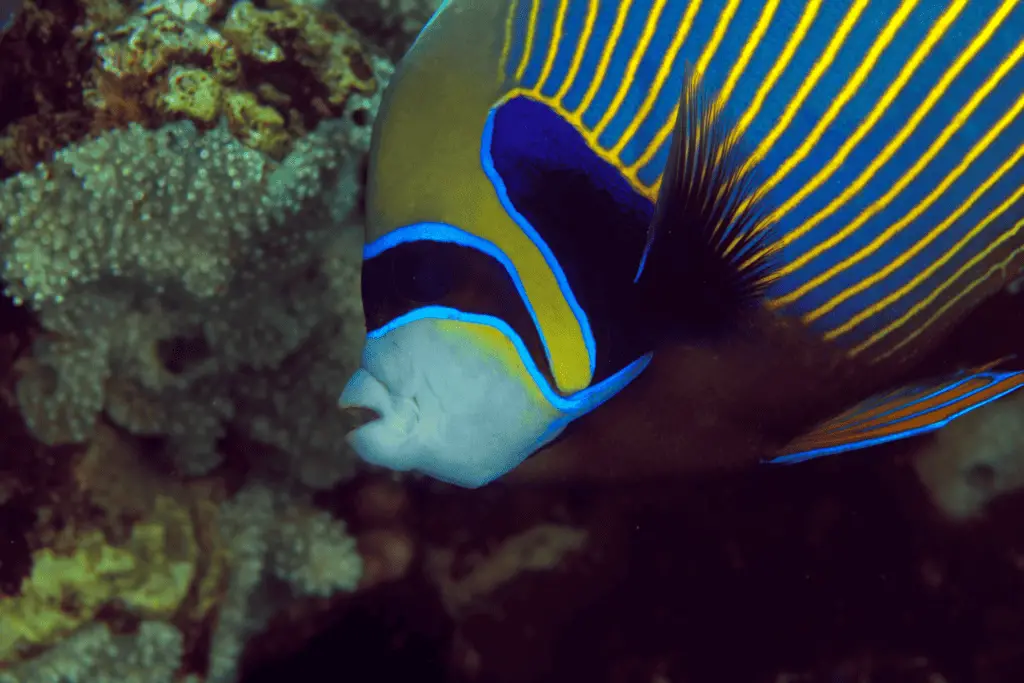
Diet and Feeding Habits
Feeding Habits
Emperor Angelfish are omnivorous and have a natural tendency to graze on various food sources throughout the day. In the wild, their diet primarily consists of algae, sponges, tunicates, and invertebrates. They use their strong jaws and well-developed teeth to break down the tough outer layers of sponges and tunicates, reaching the softer and more nutritious parts inside. They also scrape algae off rocks and other surfaces as they swim.
As aquarium inhabitants, they are very active and require a well-rounded diet to ensure their health. To replicate their natural feeding habits, we recommend providing them with a combination of high-quality flake food, fresh or frozen mysis shrimp, and marine algae.
Dietary Requirements
To maintain the vivid colors and overall health of the Emperor Angelfish, it is crucial to offer them a diverse and nutritionally complete diet. In captivity, we recommend the following to fulfill their dietary needs:
-
Marine algae: A vital component of their diet, we suggest regularly offering various types of marine algae such as nori, Ulva, and Spirulina. These can be attached to the aquarium using clips or weighted down to allow the fish to graze at their leisure.
-
Sponges and tunicates: Providing sponges and tunicates either live or frozen will help meet the fish’s natural dietary requirements. They contain essential nutrients that play a crucial role in maintaining their immune system and overall health.
-
Invertebrates: A variety of invertebrates, such as mysis shrimp, copepods, and brine shrimp, can be offered to supplement their diet. This mimics their wild feeding habits and supports their overall nutritional needs.
-
High-quality flake food: A high-quality flake food enriched with Spirulina will provide an excellent source of nutrition for Emperor Angelfish. This can be provided daily, ensuring their balanced diet and health.
By offering a diverse and nutritionally balanced diet, we can ensure that our Emperor Angelfish remain healthy, vibrant, and active in the aquarium for many years.
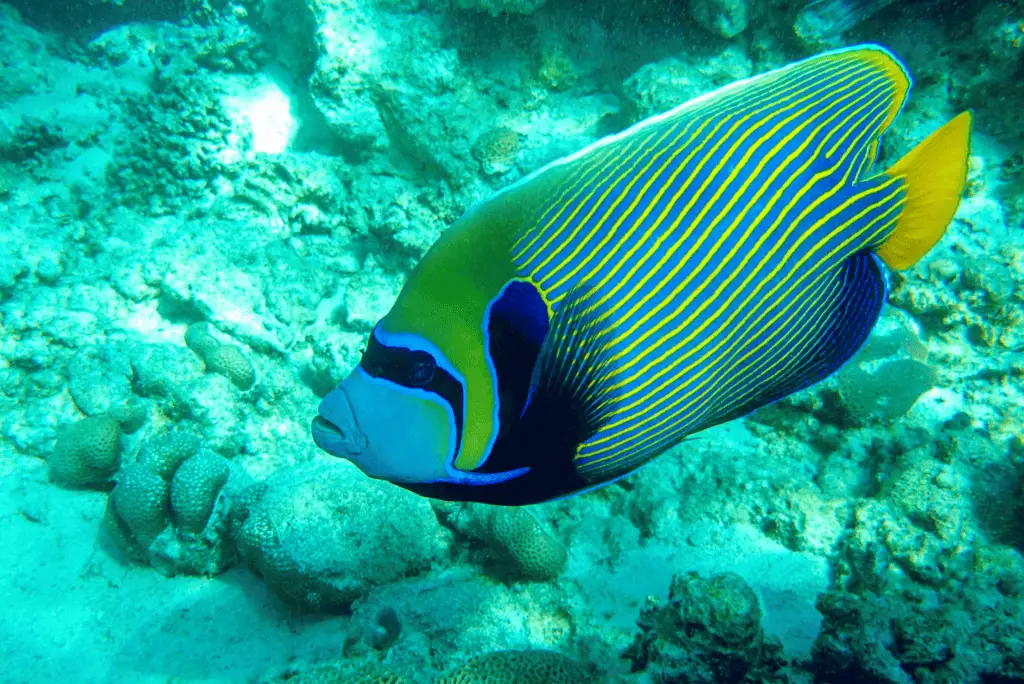
Aquarium Care
Tank Requirements
When it comes to caring for Emperor Angelfish, the first thing we must consider is the size of the tank. These saltwater fish require a large tank to thrive, ideally at least 100 gallons for a juvenile and 180 gallons or more for an adult. A large tank provides enough space for them to swim comfortably, reducing stress and promoting good health.
In addition to size, it’s essential to include various hiding spots, such as live rock formations and caves in the saltwater aquarium. Emperor Angelfish are known to be shy fish, and providing them with plenty of hiding spots helps them feel secure in their environment.
Water Quality
Maintaining proper water quality is a crucial aspect of keeping a healthy environment for Emperor Angelfish. We must monitor and maintain the following water parameters:
- Temperature: 75-82°F
- Salinity: 1.020-1.026 sg
- pH: 8.1-8.4
- Alkalinity: 8-12 dKH
- Ammonia/Nitrite/Nitrate: As low as possible (ideally 0 ppm)
To ensure stable water conditions, we recommend testing the water parameters weekly and conducting regular water changes. It’s essential to monitor for any sudden fluctuations that may stress or harm the fish.
Lighting and Filtration
In a saltwater aquarium, effective lighting and a powerful filtration system are essential for supporting the health and well-being of all inhabitants. For Emperor Angelfish, moderate lighting is suitable, as they are not photosynthetic organisms. However, if you have live corals or other photosynthetic organisms in the tank, you may need to provide stronger lighting to support their growth and survival.
A high-quality filtration system is critical for maintaining water quality in a saltwater aquarium. We recommend a system that provides mechanical, chemical, and biological filtration to maximize the efficiency in removing waste byproducts and toxins. If necessary, you can also add a protein skimmer to help remove additional organic waste.
Since Emperor Angelfish may pick at cleaner fish, it’s important for aquarists to ensure the tank is free from pests and diseases that these cleaner fish might help remove. Maintaining proper water quality, filtration, and lighting can help prevent the introduction of harmful organisms and keep the aquatic environment clean for your Emperor Angelfish.
Breeding and Reproduction
Breeding Behaviour
In the world of Emperor Angelfish, breeding involves specific behaviours and rituals. During the breeding season, we can observe mature pairs swimming together, with the male pursuing the female. The males display their vibrant colors as they court the females. To establish territories, the males can become quite aggressive. They defend their chosen habitats with determination, warding off other males from nearby areas.
We often notice that Emperor Angelfish pairs prefer quieter, more secluded regions to breed. These areas usually have plenty of cover, such as reefs or other natural formations. The reason for this preference is simple: the more peaceful the environment, the higher the chances of successful breeding.
Reproduction Cycle
Emperor Angelfish follow a fascinating reproduction cycle. The females release their eggs in the water column, while the males simultaneously release sperm. This process is known as “broadcast spawning,” which increases the odds of fertilization.
As for the eggs, they are buoyant and translucent. This means they float on the water’s surface where they will develop into larvae after a period of about 15-20 hours. Once they reach the larval stage, the currents carry them into deeper, more nutrient-rich waters.
During this critical growth stage, the larvae feed on plankton, which helps them gain energy and strength. It typically takes between 3-4 weeks for the larvae to grow into juvenile angelfish. However, their striking color patterns do not fully develop until they reach maturity at 24-30 months of age.
In summary, the breeding process of Emperor Angelfish involves specific behaviours, courtship rituals, and a distinct reproduction cycle. Pairs form to breed in secluded areas, and their eggs undergo an incredible journey from floating embryos to vibrantly colored, mature fish. As observers, we can’t help but appreciate the complexity and beauty of these captivating marine creatures.
Health and Lifespan
Common Diseases and Parasites
Emperor Angelfish, like any other marine species, can contract various diseases and parasites. One common ailment is Marine Ich, which is a parasitic infestation caused by Cryptocaryon irritans. Symptoms include white spots on the fish’s body and the fish may be observed scratching against surfaces. To treat Marine Ich, we recommend using a copper-based medication in a quarantine tank.
Another issue can be flukes, which are parasitic flatworms. Flukes might attach themselves to the gills or skin of the Emperor Angelfish, causing irritation and difficulty breathing. Treatment includes the use of a freshwater bath and appropriate medication.
In terms of prevention, it’s essential to maintain good water quality and regularly test the parameters in the aquarium. This will help to ensure a healthy environment for your Angelfish and reduce the risk of diseases.
Lifespan and Aging
The lifespan of Emperor Angelfish varies depending on the quality of care provided and their environment. In the wild, their average lifespan is around 15 years, while in captivity, they can live up to 20 years with proper care.
To ensure a long and healthy life for your Emperor Angelfish, we suggest the following:
- Tank size: A minimum of 125 gallons is recommended, as it provides enough space for the Angelfish to swim and hide comfortably.
- Water conditions: Maintain stable water parameters and regularly check the pH, salinity, and temperature levels.
- Diet: Provide a varied diet, including frozen and live foods, as well as vegetable-based options to ensure proper nutrition.
- Hiding spots: Creating adequate hiding spaces using rocks and other ornaments will help reduce stress and improve the overall health of your Angelfish.
By following these guidelines, we can help to maximize the life expectancy and overall well-being of our Emperor Angelfish.
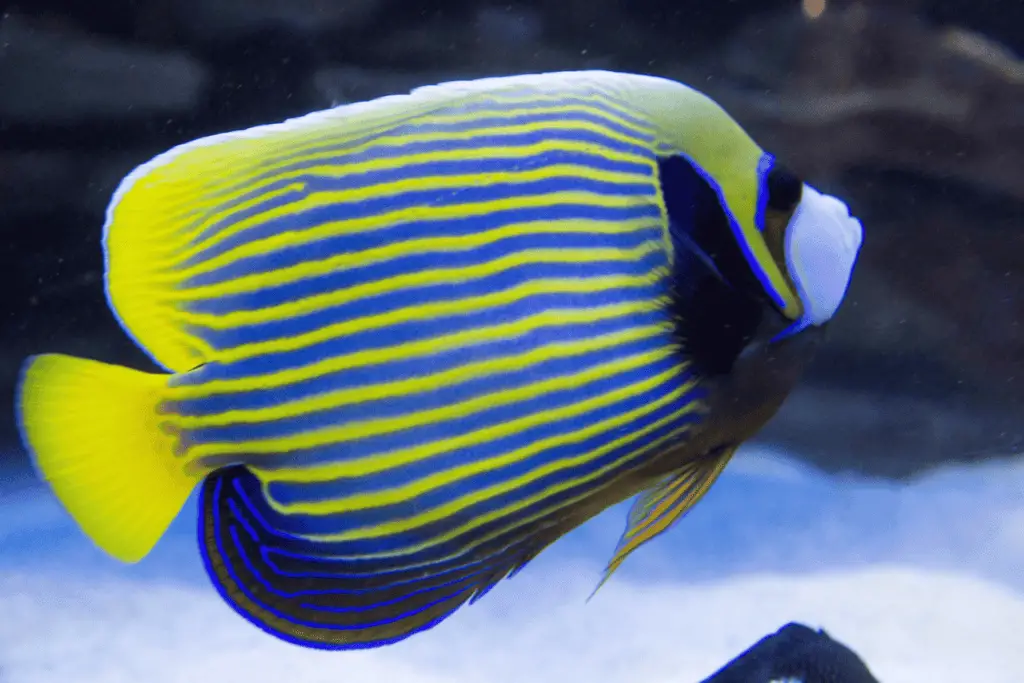
Cons and Challenges
In our experience with Emperor Angelfish, we’ve noticed a few cons and challenges that come along with keeping these stunning creatures. We want to share these with you, so you have all the information needed when considering adding an Emperor Angelfish to your aquarium.
Firstly, these fish require a large tank, ideally over 100 gallons, to accommodate their adult size and provide enough swimming space. Their vibrant blue and yellow patterns make them a beautiful addition to any aquarium, but their natural curiosity can lead them to explore and potentially damage sensitive corals and invertebrates. It is essential to monitor their behavior and provide adequate hiding spots.
Additionally, Emperor Angelfish can be territorial and aggressive towards other fish, particularly other angelfish. Introducing them in a community tank can be risky, and it’s crucial to do so with care and consideration for the safety of both the Emperor Angelfish and the tank’s other inhabitants. Providing plenty of rockwork and hiding spaces will help alleviate aggression.
Emperor Angelfish are known for their delicate diets, which must include a variety of foods to provide proper nutrition. Supplying them with a balanced diet consisting of marine algae, spirulina, and an assortment of meaty fare is critical to their overall health. Keep in mind that a balanced diet requires constant attention and commitment to avoid potential health issues.
Finally, although Emperor Angelfish are captivating creatures, they may not be the best choice for beginners in the aquarium hobby. Their complicated care requirements demand a knowledgeable and committed aquarist who can provide for their specific needs. Long-term planning and understanding their growth patterns and behavior are crucial to ensuring a fulfilling cohabitation.
Conclusion
As we’ve discussed, Emperor Angelfish are truly fascinating marine creatures. Their vibrant colors and distinctive patterns make them a beautiful addition to any underwater environment. Their unique social behaviors and feeding habits also provide us with valuable insight into the complex ecosystem of the coral reefs they inhabit.
We must be mindful of the importance of conservation efforts, as maintaining stable populations of these remarkable fish is vital for the health of the coral reefs. By educating ourselves about the Emperor Angelfish and promoting sustainable practices in the aquarium trade, we can all play a part in preserving their habitat for future generations.
Incorporating Emperor Angelfish into an aquarium can provide a captivating and rewarding experience for aquarists, as long as they are prepared for the challenges involved in their care. With the proper knowledge and commitment, we can ensure that these charming fish thrive both in their natural habitats and our little corners of the ocean at home.
Frequently Asked Questions
What is the average lifespan of an Emperor Angelfish?
The average lifespan of an Emperor Angelfish is around 15-20 years in the wild. In captivity, with proper care and a well-maintained environment, they can live for more than 10 years. It’s essential to provide them with a suitable habitat and a balanced diet to help them thrive and live a healthy life.
What is the minimum tank size required for keeping an Emperor Angelfish?
The minimum tank size required for keeping an Emperor Angelfish is 100 gallons. These fish grow up to 15 inches in length and require plenty of swimming space to thrive. As they mature, an even larger tank might be necessary, ideally between 180-220 gallons. This will ensure that they have enough room to maintain their natural swimming patterns and reduce stress.
How much does an Emperor Angelfish typically weigh?
An adult Emperor Angelfish typically weighs around 1.5 to 2.5 pounds. Keep in mind that their weight can vary depending on their diet, health, and the conditions in which they live. Regular monitoring and maintaining water quality, as well as providing a balanced diet, can contribute to their overall well-being and healthy growth.
Are Emperor Angelfish considered easy to keep?
Emperor Angelfish are generally considered moderate to difficult to keep, especially for beginners. They require a stable and pristine environment with adequate space, a balanced diet, and excellent water quality to maintain their health. Additionally, they can be sensitive to changes in water parameters, so maintaining consistency is crucial for their well-being.
Are Emperor Angelfish peaceful or aggressive?
Emperor Angelfish are usually peaceful towards other species in a community aquarium but can be territorial and semi-aggressive towards smaller or similarly-shaped fish. It is essential to carefully consider the tank mates and provide enough hiding spots and swimming space in the aquarium to minimize potential conflicts.
What distinguishes a Juvenile Emperor Angelfish from an adult?
Juvenile Emperor Angelfish have a strikingly different appearance compared to adults. They have a dark blue-black body with white to electric blue curved bands, while adult Emperor Angelfish have a bright blue and yellow coloration with distinctive arched stripes. Juveniles undergo a significant color transformation as they mature, which can take anywhere from 24-30 months. The change is gradual and fascinating to observe as they develop into their adult form.
